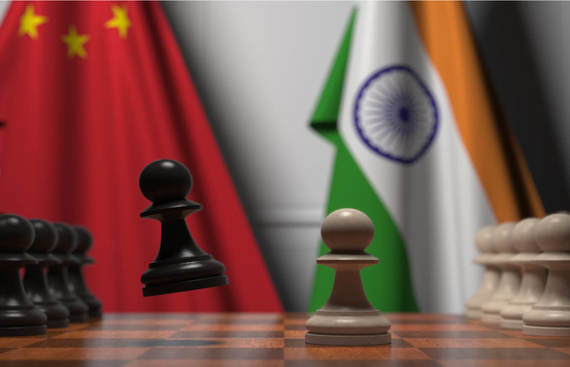Winning the Global Game. How India can Move Beyond China
By Sangeetha P, Online Content Writer, siliconindia | Thursday, 27 August 2020, 10:56 Hrs

Over the years, China has evolved to be one of the prominent suppliers in the global market. China's market has extended its wings and began to emerge as a strong raw material provider for cheaper rates, which has attracted various countries towards China for trade. The total import and export of Chinese goods are close to $280.9 billion, which is around three percent of the global trade. According to Statista, China's trade surplus stood close to $422 billion and the export goods summed a high record of about $2.5 trillion and thus, the goods exports constitute around 17.4 percent to China's GDP.
While, India's total imports from China is nearly 16 percent, as the country relies on China for electrical machinery, nuclear reactors, fertilizers, organic and inorganic chemicals, and more. But, China's contribution is much higher in comparison with other countries from whom India imports goods and services. On the contrary, according to the Federation of Indian Export Organization (FIEO), China is a major partner for exports from India. With $15.5 billion, it is the third-largest consumer destination of India. Experts say that blanket ban on China may not be feasible, as nearly $3.6 billion worth pharma ingredients are imported from China and it caters about 68 percent on pharma import. Thus, the blanket ban on China imports would lead to a shortage of medicines for both domestic and export purposes and have a direct impact on India's exports as well.
Now, with the Indian government imposing a ban on Chinese applications and products, how would India sustain without China's raw materials?
Generally, trade takes place between the manufacturers and the consumers. But, for the country to stretch its market across the globe, it has to focused on international trade. International trading provides wider exposure for producers as well as consumers and hence, broadens the availability of varied goods and services available at different quality and competitive rates.
India relies on China for raw materials especially for sectors like textiles, electronics, chemicals, and pharma. India and China are the largest pharmaceutical exporters worldwide. Though, India is the largest exporters of generic medicine, China is dominant in Active Pharmaceutical Ingredients (APIs). Thus, it is expected that the US market would squeeze and Indian Pharma manufacturers would encounter tough competition from Chinese products. To address this issue, the government is reviving the local API manufacturing to counter China's low cost. As India sees a huge opportunity here, it has started working on a plan to supersize its own ingredient manufacturing to combat China's dominance in the global market
Deepak Sood Secretary-General of the Associated Chambers of Commerce and Industry (Assocham) stated to another media firms, “When it comes to pharmaceuticals, our critical imports from China relate to APIs. The Indian government has come up with several effective measures to boost self-reliance in these crucial areas as well. For the rest of pharma products, our domestic industry can compete with the Chinese within and outside India. Even for APIs, we expect to soon catch up.” (Source: Hindustan Times)
To Balance the Trade Deficit
Laying ban on Chinese apps and goods also brought in new determination among all most every Indian to make his/her country self-reliant which gave birth to Aatmanirbhar Bharat Abhigyan. Though this policy intents to make the country efficient in manufacturing goods, it also promotes the rise of foreign direct investment (FDI). India attracting more FDIs would increase the employment opportunities which in turn would contribute to elevating the country's GDP.
The Aatma Nirbhar Bharat Abhigyan policy has been introduced mainly to revive the country's economy by focusing on land, liquidity, labor and laws that would benefit the farmers, MSMEs, taxpayers, and cottage industry.
Furthermore, the policy is also is focusing on the trade deficit that is caused due to the rift with China. While, This policy also intends to raise the average of exporting the goods as well as cutting down the goods and services import.
Divakar Vijayasarathy, Founder & Managing Partner of Consulting Firm DVS Advisors LLP, said in one of his statements, “India has always been the dumping ground for Chinese products. With America restricting imports from China, more things could be dumped in India. India has always been using both tariff-based and non-tariff based approaches to limit the dumping of Chinese goods but often in vain." He further added, "Improving the cost-effective domestic manufacturing capabilities, establishing an integrated value-added supply chain and more importantly favorable regulatory regimes are solutions for fostering domestic manufacturing in the long run.”
Challenges Government could Counter
In order to make the Aatmanirbhar policy successful, the government could find measures to bring down the input cost to compete in global trade. Duties on the raw materials, enhancing supply chain management, simplifying the tax refund system would greatly guide the country towards its goal. Also, the local investor could utilize the opportunity and provide capital at low interest rates to support the startup sectors who excel in innovation but lack financial assistance.
